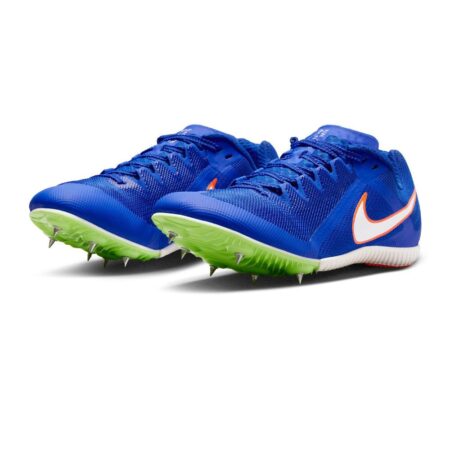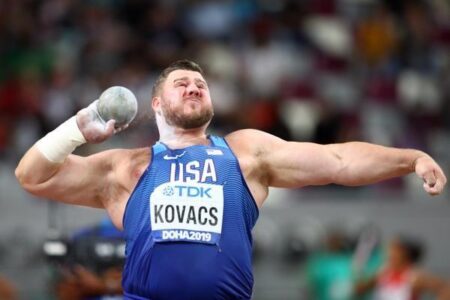A recent study published in Frontiers sheds new light on the connection between explosive lower-body power and rowing endurance performance. Researchers have investigated how force-time characteristics observed during a countermovement jump-a quick downward and upward motion widely used to assess athletic power-relate to 2,000-meter rowing ergometer results. This novel approach aims to deepen our understanding of the physical attributes that underpin rowing success, offering potential pathways for athletes and coaches to optimize training strategies and improve race outcomes.
Countermovement Jump Force-Time Metrics Unveil Key Predictors of Rowing Ergometer Success
Recent analyses of countermovement jump (CMJ) force-time metrics have highlighted their potent role in forecasting performance on the 2,000-meter rowing ergometer. By dissecting the nuances of force application and time to peak force during the CMJ, researchers have identified critical indicators that correlate strongly with rowing power and endurance. Key metrics such as peak force, rate of force development (RFD), and time to take-off emerged as reliable predictors, providing coaches and athletes with actionable insights to tailor training strategies.
Among the standout findings, athletes exhibiting a rapid rise in force and higher impulse during the early phase of the jump consistently recorded superior ergometer times. The following table summarizes the top-performing CMJ metrics and their correlation coefficients (r) with 2,000-m rowing times:
| Force-Time Metric | Correlation with Rowing Time (r) | Practical Application |
|---|---|---|
| Peak Force (N/kg) | -0.71 | Strength development focus |
| Rate of Force Development (N/s) | -0.68 | Enhancing explosiveness |
| Time to Peak Force (ms) | +0.54 | Optimize rapid force production |
| Impulse (Ns) | -0.65 | Improving power output |
These insights underline the necessity of integrating force-time analysis into rowing training regimes. Utilizing targeted CMJ assessments enables real-time tracking of an athlete’s kinetic capabilities, allowing for customized interventions aimed at maximizing ergometer performance. Coaches are encouraged to include these metrics in athlete monitoring to bridge the gap between raw strength and endurance demands of competitive rowing.
- Emphasize explosive strength by incorporating plyometric drills linked to RFD improvements.
- Monitor peak force trends to adjust resistance training load effectively.
- Develop rapid force application through neuromuscular conditioning.
- Peak Force (N/kg): Strong negative correlation with rowing time (r = -0.71). Higher peak force relates to faster rowing times, indicating the importance of developing maximal strength.
- Rate of Force Development (RFD) (N/s): Also strongly negatively correlated (r = -0.68). Enhancing explosiveness through rapid force generation significantly benefits rowing performance.
- Time to Peak Force (ms): Positively correlated (r = +0.54). Longer time to reach peak force may imply less efficient force application; therefore, reducing this time can optimize performance.
- Impulse (Ns): Negative correlation (r = -0.65). Greater impulse, showing power output during the jump, translates into better rowing ergometer results.
- Incorporate plyometric exercises targeting explosive strength and faster RFD.
- Regularly monitor peak force values to personalize resistance training.
- Use neuromuscular conditioning to enhance rapid force application.
- Employ CMJ assessments for ongoing evaluation and adaptation of training programs.
- Velocity-specific training to mirror race demands and transfer jump force qualities to rowing.
- Individualized load monitoring via force-time curve analysis to track progression and adjust intensity.
- Recovery protocols such as contrast baths and dynamic stretching, optimizing force output consistency.
Certainly! Here’s a concise summary of the key points from your section on CMJ force-time metrics and their relationship with 2,000-m rowing ergometer performance:
Summary of CMJ Force-Time Metrics Related to Rowing Performance
Key Findings:
Practical Applications:
If you want, I can help you expand on training recommendations, provide example drills targeting these metrics, or assist in creating a monitoring plan based on CMJ data. Just let me know!
How Explosive Lower Body Power Translates to Enhanced 2000 Meter Rowing Performance
Explosive power in the lower body is a critical driver of effective rowing performance, especially over the rigorous 2,000-meter distance. The initial phase of each stroke relies heavily on rapid force generation to propel the ergometer’s slide, where athletes leverage their legs to maximize stroke power. Essentially, the ability to convert muscular strength into swift, forceful movements enables rowers to maintain higher stroke rates and deliver consistent power, ultimately reducing total time. Characteristics such as peak force, rate of force development, and jump height from countermovement jumps have emerged as practical indicators of an athlete’s lower limb explosiveness, directly correlating with enhanced rowing output.
To illustrate the connections between explosive lower body actions and rowing metrics, consider the following simplified comparison of force-time characteristics and rowing ergometer results:
| CMJ Variable | Elite Rowers | Sub-Elite Rowers |
|---|---|---|
| Peak Force (N) | 3,200 | 2,750 |
| Rate of Force Development (N/s) | 12,000 | 9,800 |
| Jump Height (cm) | 45 | 38 |
| 2000m Erg Time (min:s) | 5:45 | 6:10 |
These markers highlight the tangible benefits explosive strength offers – not just raw power but also the speed at which force is applied. Training that emphasizes rapid force production, such as plyometrics and weighted jump squats, can therefore enhance rowers’ neuromuscular adaptations. This offers a dual advantage: improved stroke efficiency and greater fatigue resistance during endurance efforts, proving that explosiveness underpins both the physical and technical demands of competitive rowing.
Training Strategies to Optimize Jump Force Characteristics for Competitive Rowers
Maximizing jump force characteristics demands a multifaceted approach tailored to the unique demands of rowing. Emphasizing explosive strength through plyometric exercises such as depth jumps and bounding drills can significantly enhance the stretch-shortening cycle efficiency. Additionally, incorporating Olympic lifts like cleans and snatches targets rapid force development, which is critical during the catch phase of the rowing stroke. Coaches should focus on progressive overload principles to systematically advance athletes’ neuromuscular adaptation without risking overtraining.
Integrating eccentric strength training complements these methods by improving muscle-tendon stiffness and force absorption, vital for controlling the drive phase. Key elements to embed in training regimens include:
| Training Focus | Key Benefit | Example Exercise |
|---|---|---|
| Plyometrics | Enhances explosive power | Depth Jumps |
| Olympic Lifting | Improves rate of force development | Power Cleans |
| Eccentric Training | Increases muscle-tendon resilience | Negative Squats |
| Velocity Drills | Enhances neuromuscular coordination | Medicine Ball Throws |
Concluding Remarks
In summary, this study sheds new light on the intricate link between countermovement jump force-time characteristics and 2,000-m rowing ergometer performance. By highlighting how specific jump metrics can serve as indicators of rowing power and endurance, the findings open fresh avenues for athlete assessment and training optimization. As rowing continues to demand peak physical precision, integrating such biomechanical insights could prove pivotal in crafting more effective, data-driven conditioning programs. Future research will be key to translating these correlations into practical tools that propel rowers to new competitive heights.





